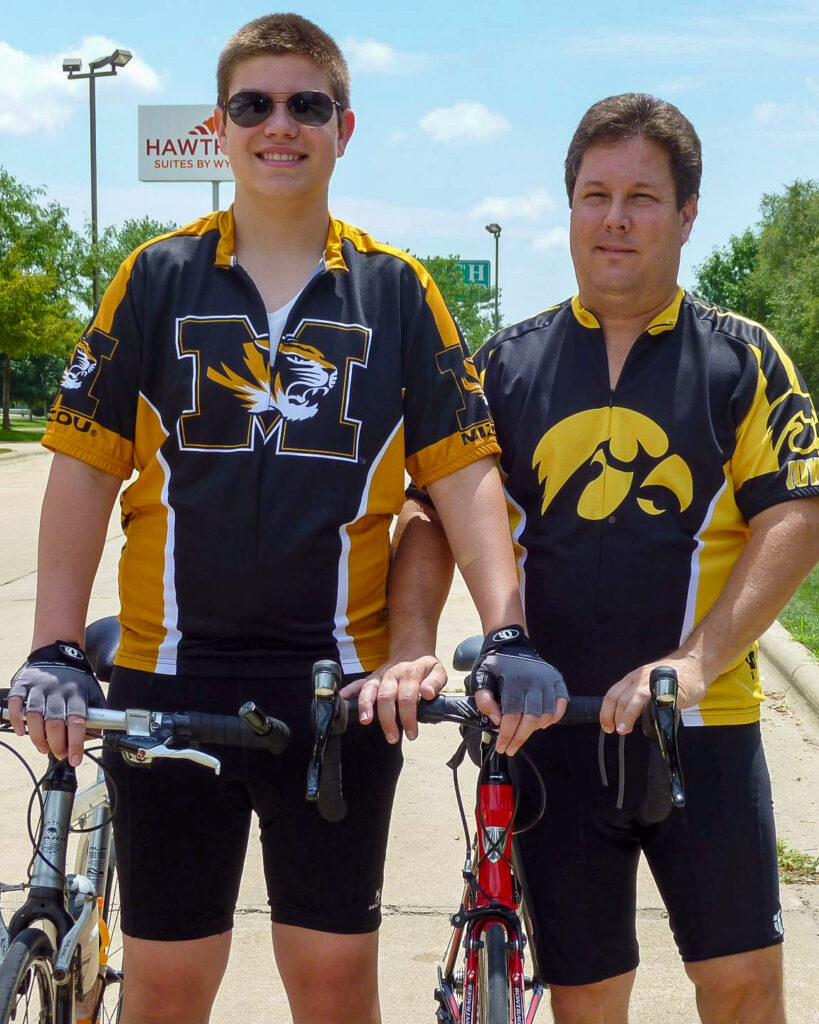We recently sat down with Staff Scientist Tim Holden to celebrate his 35-year service to the department and to find out how an engineer found his way to a fledgling cochlear implant program.
According to Cochlear Implant Program Director Jill Firszt, PhD, Tim has had a significant impact on the WUSM CI program for more than three decades.
“His unique skills and contributions have substantially improved the quality of our research program as well as how we manage patients post-operatively through his analysis of the electrode array location after surgery.,” she said.” We are grateful to Tim for his expertise and long-standing commitment to the CI program!”
How would you describe your role with the cochlear implant program?
I serve as a connection between engineering and medicine. That is difficult to describe in specific terms, but I provide the cochlear implant (CI) team with a variety of engineering skills. My duties include writing software, building hardware, testing subjects, and coordinating and assisting with MRI and CT scans of study patients. The work I do using CT scans to measure the insertion characteristics of the CI has led to some very interesting collaborations with CI researchers outside the university.
You were recently recognized for 35 years of service to the university. What does it mean to stay in the same job for that long?
Fortunately the job not only has a lot of inherent variety, but also changes as the technology associated with cochlear implants and imaging advances. The variety goes beyond just engineering, and every year is a little different than the previous year. It keeps the job interesting. We are able to support other researchers and clinics with the technology we’ve developed to assess cochlear implantation. Knowing we’re helping patients who are deaf or hard of hearing provides a very satisfying sense of purpose.

When you were studying engineering, where did you think your career would lead you?
I received a bachelor’s degree in engineering science with an emphasis in biomedical engineering from the University of Iowa. This was before the advent of a full-fledged degree in biomedical engineering. I always thought I would end up in industry, somewhere like McDonnell Douglas, now Boeing.
For my senior project, I worked on a computer model of the cochlea in Dr. Paul Abbas’ lab. This was kind of a random choice at the time, but something that I found very interesting. After graduation, I moved to St. Louis and started looking for a job in aerospace or hospital biomedical engineering.
After six months of job hunting and rejection, I looked into getting a master’s degree from the newly-accredited biomedical engineering program at Washington University. I intervened with the interim head of the Department of Electrical Engineering, Dr. Harold Shipton, who informed me of Dr. Margo Skinner, who was starting the first CI program at the medical school. I interviewed with Dr. Skinner, convinced her an engineer would be a useful asset, and my WashU career was started.

What do you like to do in your spare time?
In my spare time, I love cycling, but I’ve been laid out recently due to knee replacement surgery. I’m looking forward to getting back into it. One of my favorite rides is the Des Moines Register’s Annual Great Bicycle Ride Across Iowa (RAGBRAI). I’m looking forward (fingers crossed) to the 2021 ride that will be held the last weekend in July.
I also love spending time, when I can, with my two great kids. Both are now out on their own and working in the Kansas City area. Rachel is now 30 and Sam is 24.
